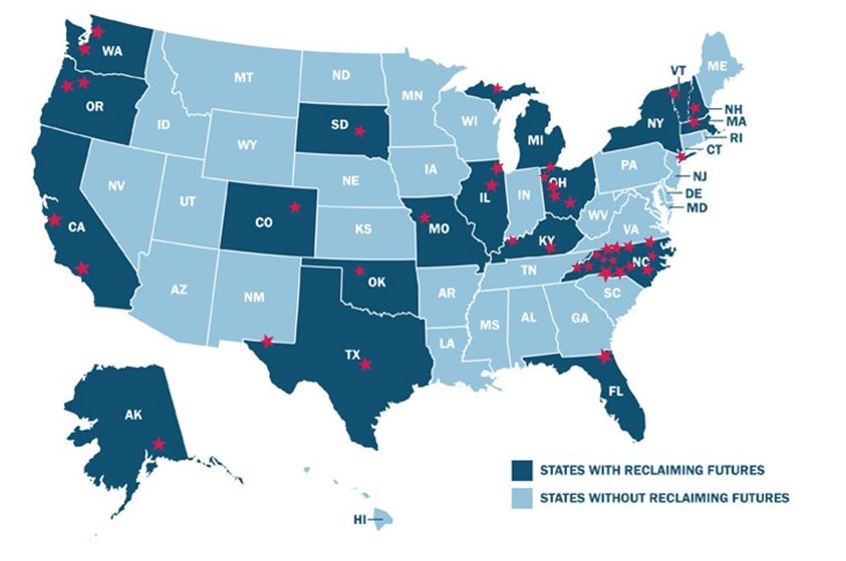Girls and Opioids: Vulnerabilities & Opportunities
By Reclaiming Futures, September 06 2017
In two separate blog posts in 2016, we discussed opioid use rates and substance use issues among adolescent girls involved with juvenile justice. In July 2017, the United States Department of Health and Human Services, Office on Women’s Health (OWH) released a report on opioid use, misuse, and overdose in women. The report provides information on the gender-specific issues and gaps in knowledge regarding females with substance use concerns/disorders. The report discusses the differences among females and males regarding the progression of substance use, the biological, social, and cultural issues (e.g., pain; relationships; family/parenting; trauma, determinants of health), effective treatments and barriers to implementation, and areas for further research. As it relates to adolescent girls (ages 12-17 years old), the report indicates they are more likely to use and become dependent on non-medical uses of prescription drugs as compared to adolescent boys. Access to prescription drugs can come from a home medicine cabinet and may help relieve mental health or physical pain symptoms and/or be part of their peer culture.







 Forsyth County’s juvenile drug-treatment court celebrated
Forsyth County’s juvenile drug-treatment court celebrated  Judge John Schwartz founded the first Drug Court of New York in Rochester in 1995—at a time when the idea was highly controversial. On Friday, Oct. 25, Judge Schwartz presided over his last graduation as he prepares for well-deserved retirement.
Judge John Schwartz founded the first Drug Court of New York in Rochester in 1995—at a time when the idea was highly controversial. On Friday, Oct. 25, Judge Schwartz presided over his last graduation as he prepares for well-deserved retirement. In celebration of National Drug Court Month, Montgomery County Juvenile Court held a graduation ceremony celebrating youth who have successfully overcome drug and alcohol abuse.
In celebration of National Drug Court Month, Montgomery County Juvenile Court held a graduation ceremony celebrating youth who have successfully overcome drug and alcohol abuse. Reclaiming Futures works in 37 communities across the country to break the cycle of drugs, alcohol and crime. In about one-third of those sites,
Reclaiming Futures works in 37 communities across the country to break the cycle of drugs, alcohol and crime. In about one-third of those sites,  Across the country, juvenile treatment drug courts (JTDC) are helping teens achieve better outcomes by focusing on treatment and family engagement. JTDCs treat teens for both substance abuse problems and mental health issues, as needed. As David Morrissette, senior program manager at SAMHSA, explained to
Across the country, juvenile treatment drug courts (JTDC) are helping teens achieve better outcomes by focusing on treatment and family engagement. JTDCs treat teens for both substance abuse problems and mental health issues, as needed. As David Morrissette, senior program manager at SAMHSA, explained to  Consistent and substantial evidence exists that supports the relationship between substance abuse and criminal behaviors in youth.[1] Youthful offenders demonstrate elevated rates of substance abuse in comparison to non-offending youth. [2] Substance abuse often increases recidivism and reflects a deeper involvement in the juvenile justice system.[3] Drug and alcohol use also increases the likelihood that a youthful offender will have prolonged interaction with the juvenile justice system. [4] In addition, substance abuse produces antisocial behavior in youth.[5] Severe substance abuse is associated with increased rates of offending and more serious offenses.[6] Furthermore, the younger the child is at the onset of substance use usually reflects greater probabilities for severe and chronic offending.[7]
Consistent and substantial evidence exists that supports the relationship between substance abuse and criminal behaviors in youth.[1] Youthful offenders demonstrate elevated rates of substance abuse in comparison to non-offending youth. [2] Substance abuse often increases recidivism and reflects a deeper involvement in the juvenile justice system.[3] Drug and alcohol use also increases the likelihood that a youthful offender will have prolonged interaction with the juvenile justice system. [4] In addition, substance abuse produces antisocial behavior in youth.[5] Severe substance abuse is associated with increased rates of offending and more serious offenses.[6] Furthermore, the younger the child is at the onset of substance use usually reflects greater probabilities for severe and chronic offending.[7] Juvenile Justice Reform
Juvenile Justice Reform


